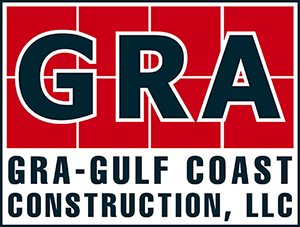The concrete used in Houston industrial construction projects bears little resemblance to the primitive mixtures used in ancient times. These early concrete formulations were composed of several elements:
• Crushed rocks that were sometimes burned to change their chemical makeup
• Water
• Sand
• Gravel or small stones
The first three ingredients were combined to make a crude cement mortar; when stones were added to the mixture, the resulting materials could be used to build walls, create durable pathways and to help construct the primitive houses of the time period. Archaeological evidence suggests that the Bedouin traders of southern Syria were using concrete-like mixtures to build homes as early as 6500 B.C.
Greek and Roman Use of Concrete
The ancient Greeks were among the earliest known users of concrete in construction; the ruins of the hill fort and palace in Tiryns, Greece, still show traces of the lime and pebble concrete floors used by builders between 1400 and 1200 B.C. The Romans were the first civilization to make extensive use of concrete in public buildings and commercial construction projects. Because concrete could be molded into a wide range of durable shapes, it offered exceptional flexibility for builders and architectural designers during this time period. Many of the most striking structural designs of the Roman architectural revolution were directly attributable to the increasing popularity of concrete between 350 B.C. and 476 A.D., the year generally considered to mark the fall of the Roman Empire.
Hydraulic Lime and Portland Cement
John Smeaton is credited with one of the major leaps forward in concrete technology. In 1793, Smeaton was engaged in rebuilding the Eddystone Lighthouse in Cornwall. While experimenting with different cement formulations, Smeaton discovered that the clay content percentage of limestone had a significant effect on the hydraulic properties of cement mixtures. While Smeaton did not pursue this line of research, his discovery made it possible for later engineers to develop a variety of improved cement mixtures that ultimately culminated in the production of Portland cement by Joseph Aspdin in 1824. While numerous adjustments have been made to this formula since the early 1800s, Portland cement remains the basis for most modern concrete mixtures.
Concrete Today
Today, concrete is used in almost every type of construction. One key to its enduring popularity is its exceptional versatility. Concrete floors are in vogue in the design/build industry for their durability and the customization options they offer for homeowners. Concrete foundations are the standard throughout the construction industry. Builders depend upon concrete to provide strong and reliable support for bridges, buildings, walls, dams and many other construction projects. In the Houston area, concrete is one of the most commonly used materials in residential, industrial and commercial construction. New research in the fields of chemistry and engineering has created a number of breakthroughs that are likely to make concrete even more useful for future generations.
The Future of Concrete
New forms of cement are currently being developed that offer significant benefits for construction companies. Carbon negative concrete formulations actually absorb carbon dioxide from the environment during curing, making them an outstanding choice for green-friendly building. Self-healing concrete incorporates specially developed bacterial colonies to repair gaps and breaks that develop on the surface over time. The increasing availability and popularity of 3-D printing is also likely to boost demand for concrete; researchers at the University of Southern California are currently developing a system by which entire buildings can be printed using concrete.
Concrete is the single most popular construction material in the world. With recent advances and ongoing research into additives and other enhancements, concrete continues to demonstrate its importance in the modern construction environment.
